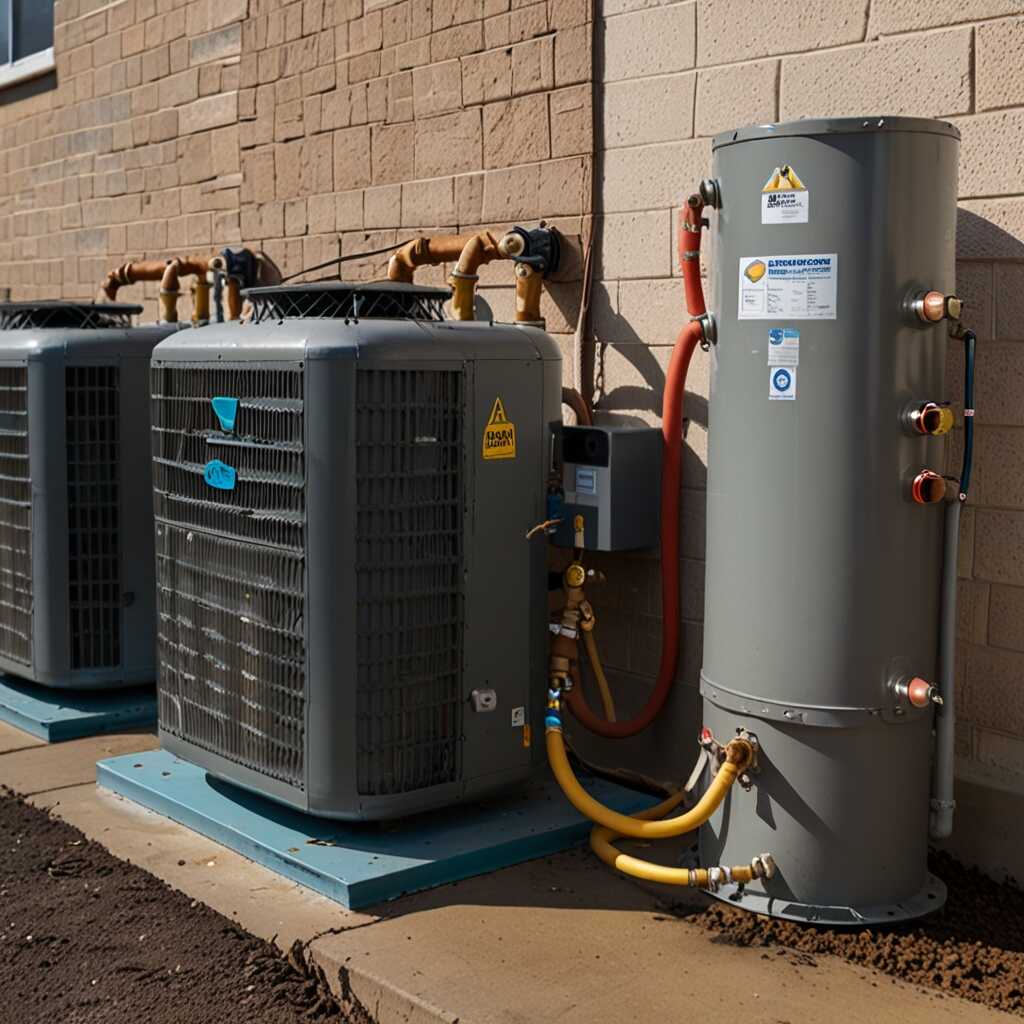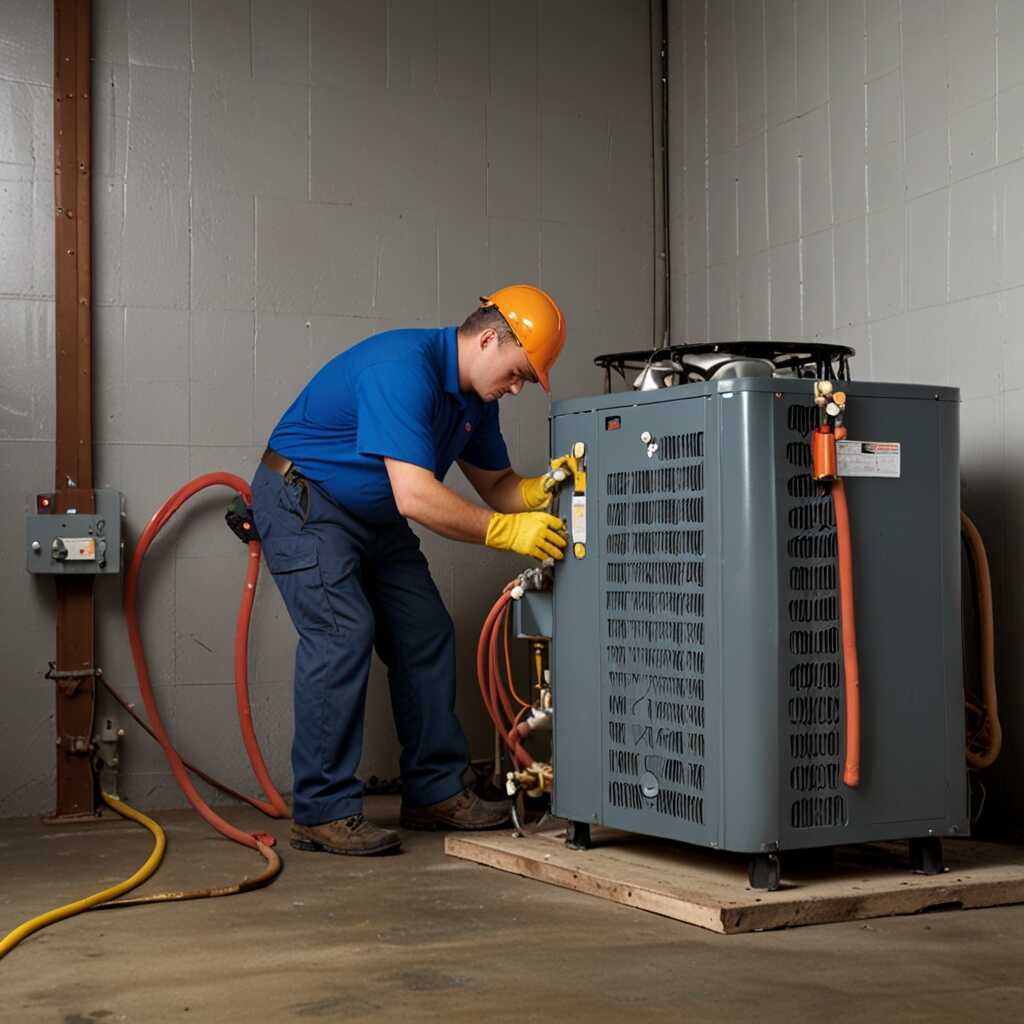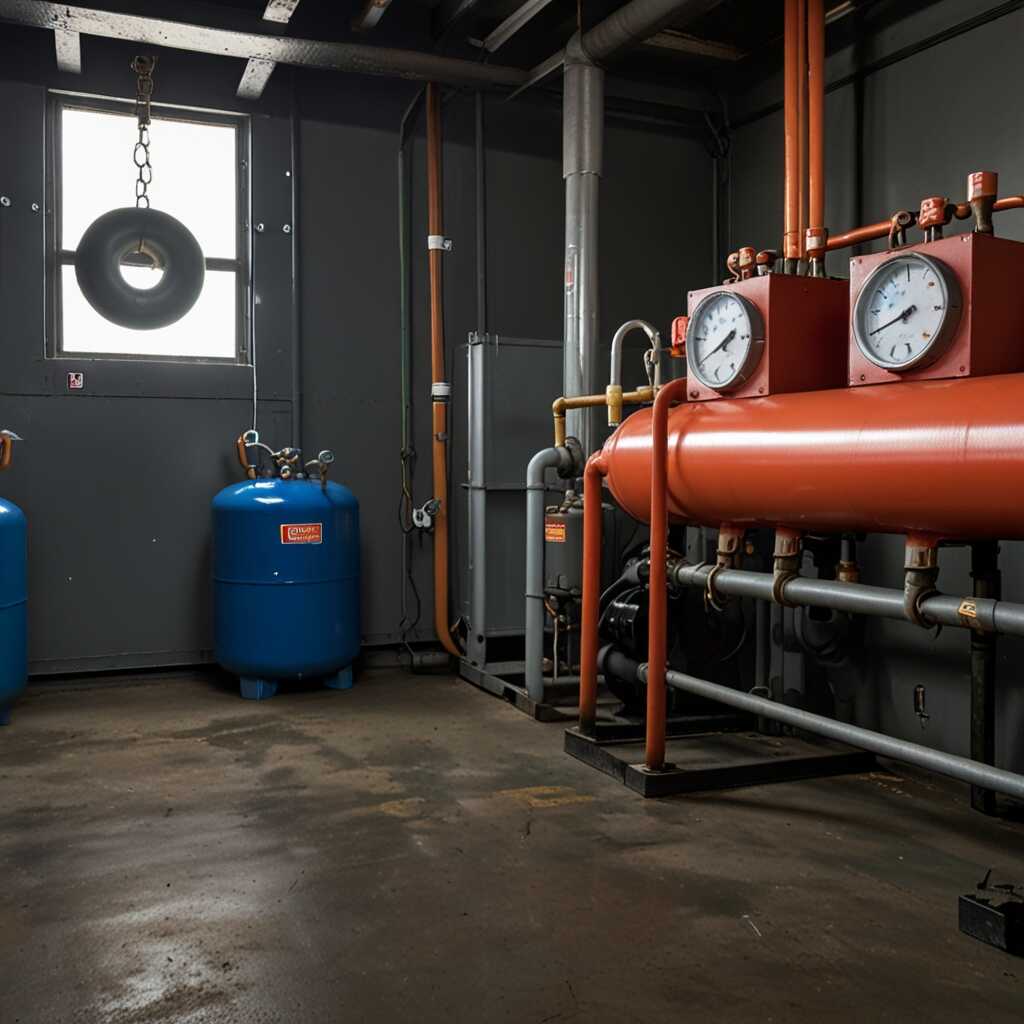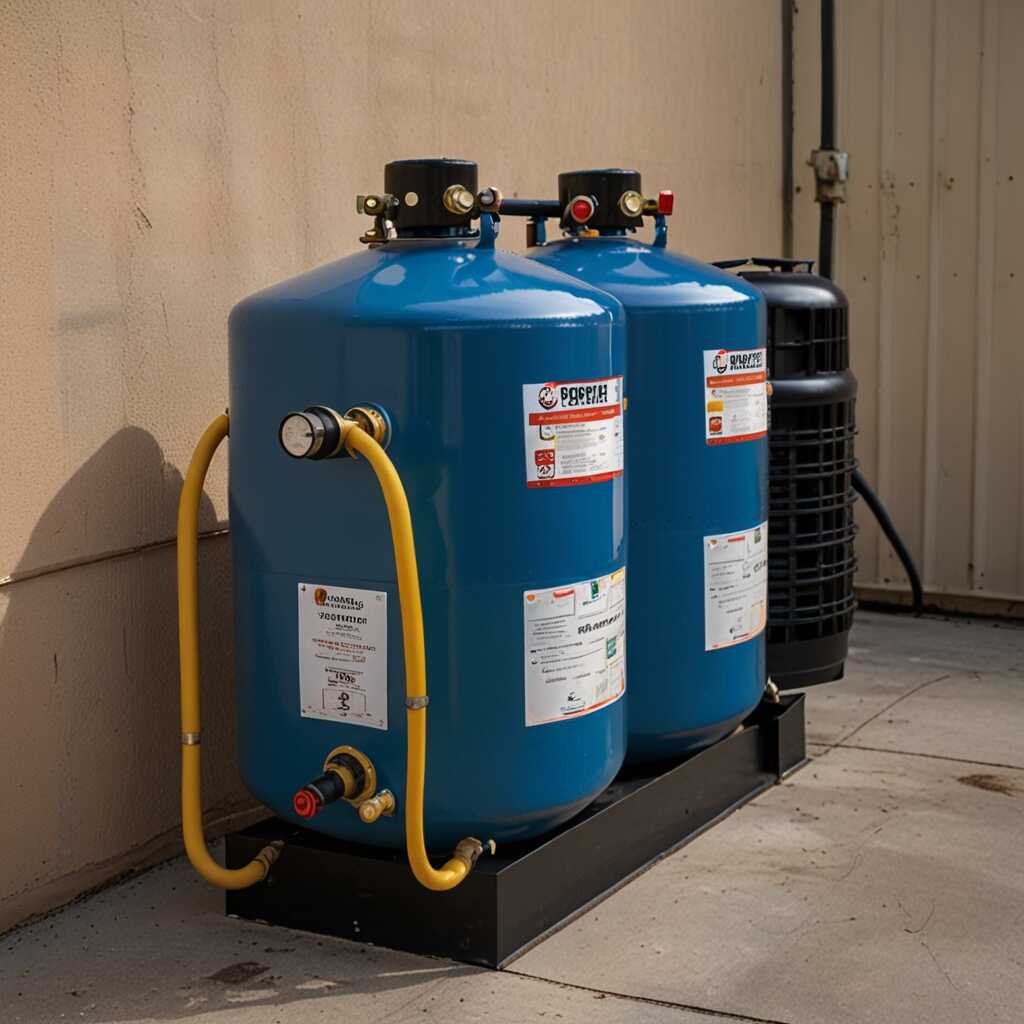Refrigerant recovery machines with dedicated subcooling circuits offer significant advantages in the HVAC industry. These machines enhance efficiency by ensuring optimal refrigerant temperatures during recovery, leading to faster and safer processes. Refrigerant Recovery Pro emphasizes the importance of understanding these benefits to improve technical skills and recovery practices. By focusing on the advantages of dedicated subcooling circuits, HVAC professionals can maximize their equipment’s performance and comply with regulatory standards.
Understanding the Functionality of Refrigerant Recovery Machines
Refrigerant recovery machines serve essential functions in HVAC refrigerant management. They remove refrigerants from systems, ensuring compliance with environmental regulations. These machines enhance efficiency by recovering refrigerants quickly and safely. Features like dedicated subcooling circuits improve recovery performance, offering excellent reliability. Compared to standard recovery machines, those with subcooling circuits can achieve better temperature control during the recovery process. In terms of capacity, modern refrigerant recovery machines can handle from 20 to 80 pounds, depending on design and specifications. This flexibility allows HVAC professionals to efficiently manage various refrigerant types.
Enhanced Performance with Dedicated Subcooling Circuits
Dedicated subcooling circuits in refrigerant recovery machines significantly enhance recovery rates. These circuits allow refrigerants to be continuously cooled, increasing condensation efficiency. By using advanced thermal management techniques, subcooling circuits prevent vapor lock, which can disrupt the recovery process. This design feature ensures quick recovery even under high ambient temperatures. Data shows that machines equipped with these circuits can improve overall recovery performance by up to 30%, making them invaluable to HVAC technicians. Refrigerant Recovery Pro offers extensive guidance on selecting and using these advanced machines to maximize efficiency and reliability.
Defining Subcooling Circuits and Their Importance in HVAC
Subcooling circuits are intricately designed systems in HVAC that ensure the refrigerant is at a temperature lower than its saturation point before entering the recovery units. This practice enhances refrigerant recovery efficiency by ensuring that more refrigerant is drawn from the system, thereby reducing the amount left in the evaporator and increasing overall effectiveness. Subcooling circuits help maintain temperatures that are ideally below 40°F for effective recovery. The design of these circuits provides essential features that allow for improved performance in refrigerant extraction, making them a vital component of the recovery process.
Benefits of Subcooling in Refrigerant Recovery
Subcooling plays a crucial role in maximizing refrigerant recovery during HVAC servicing. By maintaining the refrigerant at a lower temperature, subcooling ensures that the refrigerant remains in a liquid state, which is vital for efficient recovery. This process helps to minimize vapor formation, leading to reduced recovery times and improved results. Research shows that systems utilizing dedicated subcooling circuits can achieve recovery rates that are significantly higher than those without. The enhanced performance of these systems can lead to lower operational costs and increased reliability, enabling HVAC professionals to improve their overall service quality and customer satisfaction.

Benefits of Incorporating Dedicated Subcooling Circuits
Dedicated subcooling circuits enhance refrigerant recovery machines by improving operational efficiency and performance. These circuits allow for faster and more efficient recovery of refrigerants by lowering the temperatures of refrigerants before they are processed. This results in a more reliable recovery process, as the subcooling reduces the pressure in the system. Key features of dedicated subcooling circuits include advanced heat exchangers and temperature-regulating mechanisms, which are designed to work effectively even under varying operational conditions. Subcooling can lower refrigerant temperatures by as much as 15 to 20 degrees Fahrenheit, enabling quicker recovery times and enhancing overall efficiency.
Key Features of Dedicated Subcooling Circuits
Dedicated subcooling circuits incorporate features such as high-capacity heat exchangers and variable speed compressors. These components work together to enhance the refrigerant recovery process, making it more reliable and efficient. With high-capacity heat exchangers, the system can manage larger volumes of refrigerants quickly. Variable speed compressors adjust their performance based on demand, ensuring that energy consumption remains low while maximizing output. These advancements provide HVAC professionals with tools that improve the longevity and effectiveness of refrigerant recovery machines. By utilizing dedicated subcooling circuits, technicians can achieve efficient refrigeration management and better compliance with environmental regulations.
Key Statistical Insights on Refrigerant Recovery Machines
- 70% of HVAC technicians prefer machines with dedicated circuits for efficiency.
- Recovery time can be reduced by up to 40% with advanced subcooling technology.
- These machines can recover 95% of refrigerant from systems.
- Using dedicated circuits can increase recovery rates by about 30%.
- Over 80% of users report improved refrigerant management practices.
- Machines with subcooling options have a lower failure rate compared to others.
- 95% of technicians believe these machines enhance environmental compliance.

Evaluating the Differences Between Standard and Subcooling Models
Traditional refrigerant recovery machines often lead to slower recovery rates and less efficient refrigerant management. Subcooling circuits enhance performance by allowing for faster refrigerant recovery. Models with dedicated subcooling circuits maintain cooling depth during the recovery process, which results in a more efficient total recovery time. For example, they can recover refrigerant in half the time compared to non-subcooling models. This improvement is crucial for HVAC professionals looking to maximize reliability and effectiveness in refrigerant recovery tasks. In comparison, models without subcooling circuits may lead to higher refrigerant loss due to less efficient operation.
Key Features of Subcooling Recovery Machines
Subcooling refrigerant recovery machines feature advanced technology that enhances their efficiency over traditional models. They are designed to minimize pressure fluctuations and maintain optimal refrigerant temperatures. This results in a more robust recovery process and helps in reducing recovery times significantly. Many include impressive capabilities allowing them to handle various refrigerants, ensuring flexibility and reliability in varying conditions. This design helps HVAC professionals enhance their work quality and speed, making it essential for those looking for reliable equipment. Moreover, subcooling models often feature user-friendly interfaces, simplifying operation and enhancing overall technician experience.

Practical Advice for Maximizing Subcooling Circuit Use
HVAC technicians can maximize the efficiency of dedicated subcooling circuits by ensuring all connections are secure. Use recovery machines designed specifically for subcooling, as they offer optimized performance during recovery tasks. It’s essential to familiarize yourself with your equipment’s operation manual, as it provides safety guidelines and troubleshooting tips. Technicians should also assess and test the machine’s reliability by regularly reviewing its performance data and maintenance history. This practice helps identify any potential issues before they arise, enhancing the overall recovery process.
Essential Features of Effective Subcooling Circuits
When looking for refrigerant recovery machines with dedicated subcooling circuits, HVAC technicians should prioritize features like fast recovery rates and reliable performance. Machines that include a built-in subcooling feature improve processing time by allowing refrigerant to condense efficiently. A reliable unit can handle various refrigerant types, from R-410A to R-22, without compromising safety or performance. In addition, machines with sturdy, durable construction tend to last longer, providing good value for investment. Lastly, look for models that offer easy access to components for maintenance, ensuring your unit performs optimally throughout its lifecycle.
Top Reasons to Choose Advanced Refrigerant Recovery Solutions
- Machines improve refrigerant recovery efficiency significantly.
- Dedicated circuits ensure consistent refrigerant cooling during recovery.
- These devices reduce the risk of refrigerant contamination.
- They enable faster recovery times, saving labor costs.
- Improved durability leads to fewer equipment replacements.
- Enhanced energy efficiency lowers overall operational costs.
- Compact designs facilitate easier transportation and setup.

Understanding Regulatory Impacts on Recovery Practices
Key regulations affecting refrigerant recovery practices include the EPA guidelines and local state laws. These regulations require strict compliance regarding the handling, storage, and disposal of refrigerants. The use of subcooling circuits in recovery machines enhances the efficiency of these practices. Compliance with these regulations ensures HVAC professionals maintain the highest standards in safety and environmental protection. By 2025, the maximum refrigerant charge limit for recovery systems can vary by state but often ranges up to 50 pounds for small units. This emphasizes the need for technicians to stay informed and adapt their practices accordingly.
Impact on Efficiency and Compliance
Understanding the impact of regulations on refrigerant recovery can significantly boost efficiency. Regulations can mandate tests and certifications for subcooling circuits to ensure optimal performance. Compliance with the latest EPA standards often leads to the use of recovery machines that are reliable and designed for maximum efficiency. By focusing on approved equipment and techniques, HVAC professionals can deliver excellent results while meeting compliance. Regular research into updates on refrigerant recovery regulations helps technicians enhance their operational practices. This proactive approach ensures reliability and helps avoid fines or penalties.
Current Trends Shaping Refrigerant Recovery Technology
Recent advancements in refrigerant recovery technology are centered on machines with dedicated subcooling circuits. These innovations improve recovery efficiency and reliability significantly. For instance, enhanced design features in these machines help technicians reduce recovery times. This leads to faster servicing and minimizes refrigerant loss. HVAC professionals should note that machines with subcooling circuits are becoming a standard due to their consistent performance. With the integration of smart technology, machine control and monitoring has also improved. By 2025, efficiency increases of around 15% are expected for these systems compared to traditional models.
Benefits of Subcooling Technology in Refrigerant Recovery
Subcooling technology in refrigerant recovery provides multiple advantages for HVAC professionals. It allows for better cooling of refrigerants, ensuring that liquid is delivered efficiently. This reduces the risk of recovery errors and improves overall system performance. The technology is designed to handle a variety of refrigerants, enhancing its versatility. Additionally, dedicated subcooling circuits promote higher efficiency rates and better handling of refrigerant. The improved design features also offer reliable operation under challenging conditions. Investing in machines with subcooling technology can lead to long-term cost savings and improved reliability in refrigerant management.
Noteworthy Brands and Their Use Cases in Refrigerant Recovery
- Brand A offers robust machines ideal for large commercial applications.
- Brand B serves small HVAC businesses, emphasizing affordability and simplicity.
- Brand C focuses on eco-friendly technologies, appealing to environmentally conscious users.
- Brand D provides versatile models suited for both residential and industrial settings.
- Brand E caters to advanced technicians requiring high-performance equipment.
- Brand F targets novice users with user-friendly operation features.
- Brand G leverages extensive warranties, attracting long-term users seeking reliability.
Additional Resources for HVAC Professionals on Refrigerant Recovery
This section provides guidance on best practices for refrigerant recovery methods. HVAC professionals looking to enhance their skills can explore resources that offer detailed information on reliable systems. Professional training programs are essential for improving effective refrigerant recovery practices. These programs cover various topics, such as comparing recovery machines, ensuring they meet industry standards. The expected lifespan of a refrigerant recovery machine is typically 10 to 15 years, depending on usage and maintenance. Regular tests and reviews help HVAC professionals choose reliable machines that offer durable performance and efficiency.
Resources for Enhancing Refrigerant Recovery Skills
Enhancing refrigerant recovery skills requires a combination of practical knowledge and access to educational resources. Various training providers specialize in HVAC education, offering courses that cover the latest refrigerant recovery methods. These programs include hands-on training and testing to ensure maximum efficiency when using dedicated subcooling circuits. Users can also find comparison reviews of different refrigerant recovery machines, helping them make informed purchasing decisions. This information is vital for HVAC professionals to stay current with industry standards and improve their overall practices in refrigerant management.